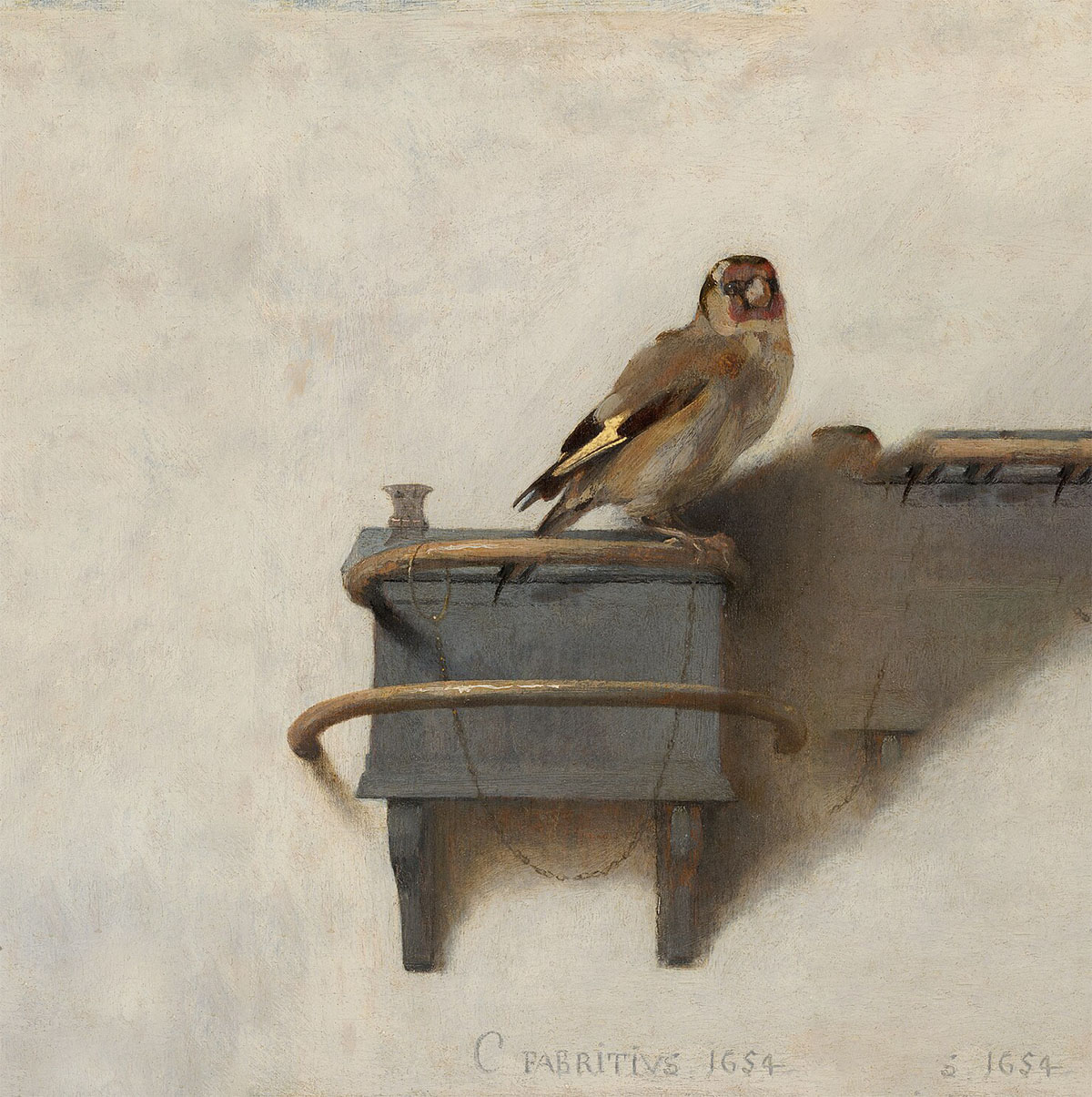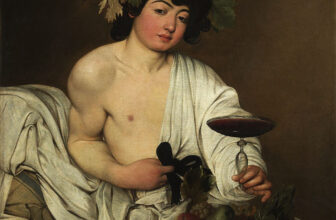
The Goldfinch Painting Carel Fabritius
Nestled in the modest yet haunting stillness of a panel just under 10 inches high is one of the most enigmatic paintings in Dutch art: The Goldfinch, created in 1654 by Carel Fabritius. To the untrained eye, it might seem simple, almost too simple. A small bird, chained to a perch, set against a bare, pale background. But as with many masterpieces of the Dutch Golden Age, simplicity masks a deep reservoir of meaning, emotion, and technical genius.
This little bird, perched, still, almost breathing, is far more than a casual study of an animal. It’s a meditation on beauty, captivity, fragility, and time itself. It has become, through time, tragedy, and rediscovery, an icon of resilience in the art world.
The Artist Behind the Canvas: Who Was Carel Fabritius?
To understand The Goldfinch, one must first know its maker, Carel Fabritius, a name that might have remained obscure were it not for the haunting resonance of this tiny painting. Born in 1622 in Middenbeemster in the Netherlands, Fabritius was part of a family of painters and craftsmen. Initially trained as a carpenter, he later shifted his focus to painting, a change that would have profound implications for the Dutch art scene.
Fabritius was a student of Rembrandt, one of the titans of the Dutch Golden Age. But unlike many of Rembrandt’s other pupils, Fabritius developed a distinctive style that leaned toward softer, more luminous color palettes and a focus on natural daylight. Where Rembrandt embraced shadow and chiaroscuro, Fabritius sought illumination, light spilling into space, dissolving form into atmosphere.
By the time he painted The Goldfinch, Fabritius had moved to Delft and was considered a rising star. He had developed his own technique and artistic voice, favoring perspective tricks, spatial illusion, and intimate portrayals. His life, however, was tragically cut short. In October 1654, the Delft gunpowder magazine exploded, leveling much of the city. Fabritius was among the dead. At the time of his death, he was only 32 years old. Most of his works were lost in the explosion. Only a handful survive today, perhaps no more than a dozen.
Among them is The Goldfinch.
The Creation of The Goldfinch: Technique and Style
Painted the same year as the Delft explosion that took Fabritius’s life, The Goldfinch was one of his final works. It was created using oil on a wooden panel, a common medium in Dutch Golden Age painting. But its simplicity belies its complexity.
The painting is incredibly small, just 33.5 x 22.8 cm (approximately 13 x 9 inches), and uses a technique known as trompe-l’œil, or “deceive the eye.” This style, popular in Dutch art, aims to create such a convincing illusion of reality that the viewer believes they are seeing a three-dimensional object rather than a painted image. Fabritius was one of the first artists to fully embrace and experiment with this technique.
In The Goldfinch, the bird perches on a wooden ring attached to a metal box, likely a bird feeder. A delicate chain tethers the bird’s leg to the perch, emphasizing its captivity. The composition is stark. The background is a smooth, pale gray wall that further enhances the bird’s lifelike presence. Light spills in from the left, casting shadows that reinforce the illusion of depth and tangibility.
Fabritius didn’t just paint a bird. He painted space, air, light, surface. The subtle gradations of tone and brushwork demonstrate his genius in manipulating depth and light. It is both real and not real, a quiet moment frozen in time.
What Is The Goldfinch All About?
At first glance, The Goldfinch appears to be a simple genre painting, an animal study, perhaps, or an exercise in trompe-l’œil. But beneath that apparent simplicity lies a depth of emotion and symbolism that has kept scholars, artists, and viewers fascinated for centuries.
Captivity and Freedom: The most striking visual element is the chain. It evokes immediate empathy. The bird is free in its form, it can fly, it is alive, vibrant, but it is tethered. This tension between the impulse toward flight and the reality of restraint becomes a powerful metaphor. The painting may represent the tension between the human soul’s desire for freedom and the constraints imposed by society, circumstance, or fate.
Mortality and Fragility: Given that The Goldfinch was painted shortly before Fabritius’s death in a catastrophic explosion, the painting takes on an almost prophetic quality. The bird, so fragile and small, becomes an emblem of life’s fragility. Its vivid form and trembling stillness suggest the fleeting nature of life. We are all like the goldfinch, alive, beautiful, but tethered to forces beyond our control.
Religious and Symbolic Overtones: In Christian iconography, the European goldfinch has long held symbolic meaning. Because it feeds on thistles and thorny plants, it has been associated with the Passion of Christ, suffering, sacrifice, and redemption. In Renaissance and Baroque art, goldfinches often appear in depictions of the Madonna and Child, representing foreknowledge of the Crucifixion.
Although Fabritius’s The Goldfinch is a secular painting, it is not without echoes of that religious symbolism. The bird’s chain may remind viewers of Christ’s suffering, or of the human soul’s entrapment in the material world.
What Is Happening in The Goldfinch?
Unlike narrative paintings that depict events or stories, The Goldfinch is a moment suspended in time. There is no action, no movement. And yet, something is happening: a meditation, an observation, a breath held between moments.
The bird gazes outward, head turned slightly to the side, almost as though acknowledging the viewer. There’s a quiet dignity in its posture, a suggestion of endurance. The presence of the chain disrupts any sense of pastoral ease, it introduces tension. The bird is alive, alert, but not free. The absence of a landscape, objects, or other animals makes the scene almost surreal in its isolation.
Some art historians suggest that The Goldfinch might have once been part of a larger ensemble or perhaps mounted in a perspective box, devices popular in the 17th century that used lenses or peepholes to create immersive optical illusions. This would explain the starkness of the composition and the emphasis on perspective. Whether part of a set or intended as a standalone trompe-l’œil piece, the painting’s impact as a solitary object has endured.
Symbolism and Deeper Meaning
Fabritius’s The Goldfinch is rich in metaphorical content, despite its unassuming scale and subject. Let’s explore its symbolic layers:
1. The Goldfinch as a Symbol of the Soul
Birds have long been used to represent the soul, especially in Christian and classical traditions. In The Goldfinch, the contrast between the bird’s natural state (flight) and its imposed condition (captivity) might symbolize the conflict between spirit and body, freedom and restraint.
2. The Chain
The small chain is not just a realistic detail; it’s a statement. It transforms the painting from a decorative image into an emotional narrative. The chain could symbolize human bondage, emotional, spiritual, or societal. It may allude to the artist himself, tethered to fate, unable to escape the explosion that would end his life.
3. The Void
The blank background is critical. It allows the viewer to focus entirely on the bird, but it also creates a sense of isolation. This void can be interpreted as a metaphor for existential solitude, for the emptiness that frames beauty and life.
4. The Bird Feeder
The box beneath the perch likely functioned as a feeding container. Its inclusion roots the painting in domestic life, it hints that the bird is not just a symbol but also a beloved companion. The bond between humans and animals is thus woven into the fabric of the work, highlighting themes of care, control, and domestication.
What Kind of Art Is The Goldfinch?
The Goldfinch is best described as a trompe-l’œil, a genre of painting that uses realistic imagery to create the optical illusion that depicted objects exist in three dimensions. But it is also deeply connected to the genre painting tradition of the Dutch Golden Age, which focused on scenes of everyday life, quiet domesticity, animals, still lives, and interiors.
At the same time, The Goldfinch transcends genre. It is a philosophical painting, minimalist before minimalism existed. It shares a kinship with still life, with portraiture, and with symbolist art. Its influence, in fact, has extended far beyond 17th-century painting and into modern literature, film, and visual culture.
Where Is The Goldfinch Painting Today?
Today, The Goldfinch is housed in the Mauritshuis Museum in The Hague, Netherlands. The museum, which also holds masterpieces by Vermeer, Rembrandt, and Jan Steen, is one of the most important repositories of Dutch Golden Age art in the world.
Following a surge in popular interest due to Donna Tartt’s Pulitzer Prize-winning 2013 novel The Goldfinch, the painting has become a global cultural icon. In the novel, and the 2019 film adaptation, the painting serves as a central metaphor and plot device, symbolizing beauty in the face of trauma and the redemptive power of art.
As a result, the painting has seen a dramatic increase in visitorship and cultural attention. It toured internationally, including a highly publicized visit to The Frick Collection in New York in 2014, where it was viewed by record crowds.
Why The Goldfinch Endures
There is a quiet miracle in Fabritius’s The Goldfinch. It is not loud or grandiose. It doesn’t tell a mythological tale or dramatize a historic event. It simply exists, trembling with life, in its small frame. Yet within that modest frame lies an entire world, a meditation on beauty, vulnerability, captivity, and endurance.
In many ways, The Goldfinch is a mirror. It reflects the viewer’s own fears and hopes, our longing for freedom, our experience of loss, and our search for meaning in simplicity. It reminds us that even in a moment of stillness, perhaps especially in stillness, there can be infinite depth.
Fabritius died young, but this little bird survived him. It sings, still, in silence.




